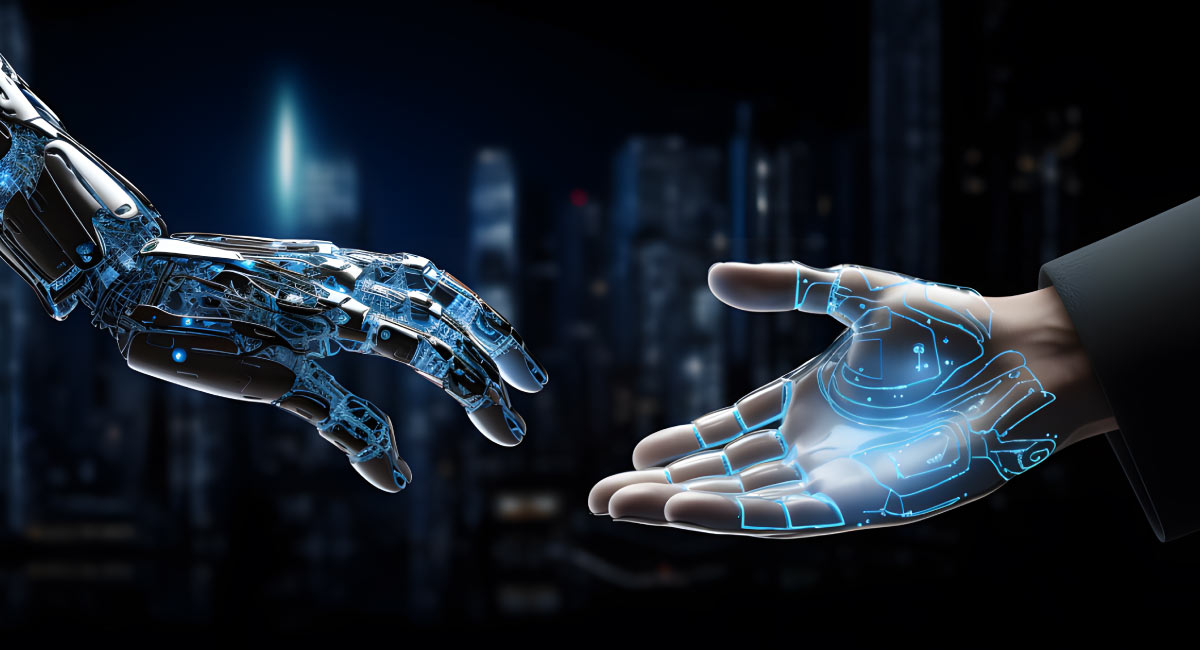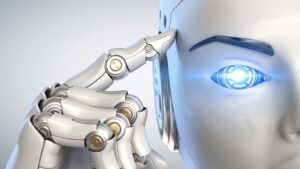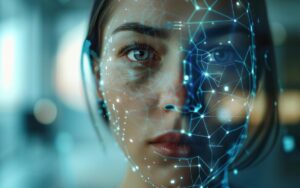We often learn how to do new things by building off the knowledge we gained from learning how to do other things in the past. For example, if you learned how to type, that knowledge can help when using a computer keyboard. Or you could take your knowledge of how to ride a bicycle and use it to ride a moped. Well, the same principle applies when training machine learning models.
This article explores the concept of transfer learning in machine learning. We will define the term, explain its need, when to use it, and how it works. We’ll also compare it with traditional machine learning and explore some examples you can learn in an online AI and machine learning bootcamp.
What is Transfer Learning?
Transfer learning is an increasingly popular machine learning (ML) technique in which a model already created for an ML task is reused for a new task. It is also an increasingly popular deep learning approach since it enables deep neural network training using less data instead of creating a new model from scratch.
It involves a machine exploiting the knowledge it acquired from performing a previous task (also referred to as the pre-trained model) to improve the generalization of a new target task.
For instance, data scientists who train a classifier to predict whether an image contains a suitcase can use the knowledge the classifier gained during training to recognize objects usually found in a suitcase. So, the old knowledge is “transferred” to the new task to help the network “learn” to solve another problem.
Also Read: Machine Learning in Healthcare: Applications, Use Cases, and Careers
Why Do We Need Transfer Learning in ML?
Many deep neural networks trained on images have a common, curious characteristic: deep learning models try to learn a low level of features in the early layers of the network, such as detecting colors, edges, intensity variations, etc. These features don’t appear specific to any particular data set or task because no matter what image is being processed, for example, detecting a car or a cat, the low-level features must be detected. All these features occur regardless of the exact cost function or the image dataset. Therefore, learning all these features in detecting cats can be used in other tasks, such as people.
Transfer learning offers several benefits, but the primary advantages are saving training time, enhanced neural network performance of neural networks, and not requiring vast amounts of data.
Large volumes of data are typically needed to train neural networks from scratch. However, access to that amount of data is only sometimes available. This is a situation where transfer learning comes in handy. Thanks to this type of ML, a practical, reliable machine learning model can be built with relatively little training data since the model has already been pre-trained. This is particularly valuable in natural language processing because expert-level knowledge is primarily required to build large, labeled data sets. In addition, training time is reduced because it sometimes takes days or weeks to train a deep neural network from scratch on how to complete a complex task.
Explaining Transfer Learning Theory
During the transfer learning process, knowledge from a source task is used to enhance and improve the learning in a new task. However, if the transfer method decreases the new task’s performance, it’s a negative transfer. It’s a significant challenge to develop transfer methods that ensure positive transfer between two related tasks while avoiding any possible negative transfer between the less related tasks.
When applying relevant knowledge from one task to another, the characteristics of the original task are customarily mapped onto the characteristics of the other task to specify correspondence. Although people typically provide this mapping, there are evolving methods that can automatically perform the mapping.
Use the following three common indicators to measure the effectiveness of transfer learning techniques:
- First. This indicator measures if the target task can be performed using only the transferred knowledge. The question: Can we use only transferred knowledge to do this?
- Second. This indicator measures the time required to learn the target task using knowledge gained through transferred learning compared to how long it would take to learn the target task without it. The question: How long will it take to do this by using transferred knowledge?
- Third. This indicator determines if the task’s final performance learned via transfer learning is comparable to completing the original task without knowledge transfer. The question: Will the results achieved with transferred learning be as good as results achieved without transferred knowledge?
How to Approach Transfer Learning
There are three common approaches
- Train a model to reuse it. So, you want to solve a task (let’s call it Alpha) but need more data to train a deep neural network to handle the job. Fortunately, you can figure out a way around this by finding a related task (we’ll call it Beta) with abundant data. You then train the necessary deep neural network on task Beta, using the model as a starting point to solve task Alpha. Whether you wind up using the whole model or just a few layers heavily depends on the problem you’re trying to solve. If both tasks have the same input, you may have the option of reusing the model and making predictions for your new input. Otherwise, consider changing and retraining both the different task-specific layers and the output layer.
- Use a pre-trained model. The second approach entails using a pre-trained model. There are plenty of available models, so it helps to do some research. How many layers can be reused and how many need retraining depends on the problem. Numerous pre-trained models for transfer learning, feature extraction, prediction, and fine-tuning can be found. This type is most often used in deep learning.
- Use feature extraction. The final approach uses deep learning to discover the problem’s best representation, which involves finding the most essential features. This approach, also called representation learning, can frequently result in much-improved performance over what can be obtained using hand-designed representation.
Also Read: What is Machine Learning? A Comprehensive Guide for Beginners
When to Use Transfer Learning
Transfer learning is a great concept but is not a universal solution. As always happens with machine learning, forming a set of applicable rules across the board is challenging. However, here are some guidelines for when it is most useful:
- There isn’t sufficient labeled training data to train the network from scratch
- A pre-trained network already exists dedicated to a similar task, typically trained on vast amounts of data
- When the two tasks have the same input
If the original model has been trained with an open-source library such as TensorFlow, restore it and retrain the appropriate layers for your task. However, remember that it only works correctly if the features the new task learns from the first task are general, which means they can also be helpful for other related tasks. Additionally, the model’s input must be of a similar size to what it was initially trained with. If this condition doesn’t exist, you must add a pre-processing step to resize the input to the required size.
Traditional Machine Learning vs. Transfer Learning
Here’s how these two machine learning models compare.
Traditional Machine Learning Models Need Training From Scratch
This requirement is computationally expensive and demands a vast amount of data to ensure a high performance. Transfer learning is computationally efficient and uses a small data set to achieve better results.
- Traditional machine learning relies on an isolated training approach. Each model is independently trained for a particular purpose and never relies on past knowledge. On the other side, transfer learning takes advantage of knowledge acquired from the pre-trained model to carry out the task.
- Transfer learning models reach optimal performance levels faster than traditional ML models. This feature is possible because the models that leverage knowledge from previously trained models have a head start; they already understand the features. Thus, this method is faster than training neural networks from the ground up.
How Does Transfer Learning Work?
This summary explains the steps required to leverage it:
- The pre-trained model. The process begins with a model previously trained for a particular task using a large data set. This model is often trained on extensive datasets and has identified general patterns and features relevant to many related tasks.
- The base model. The base model is what we call the pre-trained model. It consists of layers that have already employed incoming data to learn hierarchical feature representations.
- The transfer layers. Looking back at the pre-trained model, we find a set of layers that capture basic, generic information relevant to both the new task and the previous one. Since both tend to learn low-level information, these layers are often found near the network’s top.
- The fine-tuning. Now, we use the dataset from the new challenge to retrain the chosen layers, a process known as fine-tuning. This step aims to preserve the knowledge from the pre-training stage while letting the model modify its parameters to best suit the current assignment’s demands.
The Pros and Cons of Transfer Learning
It has its upsides and downsides. Let’s examine them more closely.
Advantages of Transfer Learning
- It speeds up the training process. By employing pre-trained models, the model can learn more effectively and quickly on the new task since it already understands the features and patterns found in the data.
- It can work with small data sets. Suppose there is only limited data available for the second task. In that case, it helps prevent overfitting since the model will have already learned the general features most likely required for the second task.
- It creates better performances. The model often leads to a better performance on the second task since it leverages the knowledge gained from performing the first task.
Disadvantages of Transfer Learning
- There may be domain mismatches. If the two tasks or the data distribution between them are very different, the pre-trained model might not be best suited for the second task.
- Overfitting may occur. If the model is excessively fine-tuned on the second task, it may lead to overfitting. Transfer learning might learn task-specific features that don’t generalize to new data.
- The process can be complex. The pre-trained model and fine-tuning process might become computationally expensive and require specialized hardware. This, in turn, could result in additional costs and other resources.
Also Read: Machine Learning Interview Questions & Answers
Transfer Learning Examples
It has many applications in natural language processing (NLP), neural networks, and computer vision.
In machine learning, data or knowledge gained while solving a problem is stored, labeled, and applied to a different but related problem. For instance, the knowledge gained by a machine learning algorithm to recognize passenger airliners could later be used in a different machine learning model being developed to recognize other kinds of air vehicles.
Somebody could use a medical-based neural network to search through images to recognize potential illnesses or ailments. If there is insufficient data to train the network, transfer learning could help identify these conditions using pre-trained models.
Transfer learning is also valuable when deploying upgraded technology, like chatbots. If the new technology is similar to earlier deployments, it can assess which prior knowledge should be transplanted and used by the upgrades. By employing it, developers can ascertain what previous deployments’ data and knowledge can be reused and then transfer that helpful information when developing the upgraded version.
In natural language processing, an older model’s dataset that understands the vocabulary used in one area can then be used to train a new model whose function is understanding multiple dialects. This newly trained model could then be used for sentiment analysis.
Do You Want to Gain AI and Machine Learning Skills?
Machine learning is an exciting, fast-growing field transforming many aspects of our lives. If you want to be part of the AI and machine learning revolution, consider this program in artificial intelligence and machine learning.
This immersive online course delivers a practical learning experience, teaching you Python, natural language processing, machine learning, and much more.
According to Indeed.com, machine learning engineers can earn an average annual salary of $166,572. So, if you’re looking for an exciting, challenging, cutting-edge career that offers security and excellent compensation, take that first step with this AI/ML bootcamp.
You might also like to read:
How to Become an AI Architect: A Beginner’s Guide
How to Become a Robotics Engineer? A Comprehensive Guide
Machine Learning Engineer Job Description – A Beginner’s Guide






